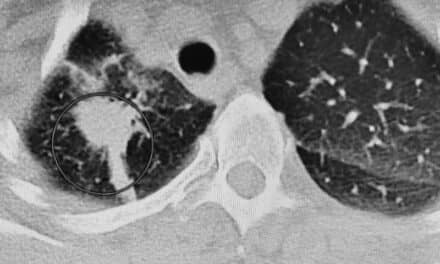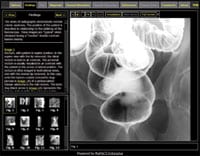 Claudia Murray Claudia Murray |
The Centers for Medicare & Medicaid Services (CMS) is considering a change in the carrier’s manual for Medicare that is aimed directly at radiology. Each freestanding provider of radiology services will be required to determine whether it is a freestanding physician’s office or an Independent Diagnostic Testing Facility (IDTF). This decision is very important because the rules covering the two entities differ. Documentation requirements are the major area of contrast between them, and practices should be planning for this change now.
SUPERVISION LEVELS
The Medicare rules for the physician supervision of diagnostic tests state that there are certain levels of physician supervision necessary in IDTFs and physicians’ offices. These levels are categorized as general supervision, direct supervision, and personal supervision. General supervision means that the physician is not necessarily on-site. The services of the facility are provided under his or her supervision and control, however, and the physician is responsible for the calibration of the equipment, the training of the technologists, and overall operations.
For an IDTF that offers services indicating direct supervision, such as CT or MRI with contrast, a physician must be physically on the premises and in the suite of offices where the tests are being performed. In the office setting, the physician must be present in the office suite and immediately available. This is defined as within earshot (not just reachable by beeper, and not merely in the same building). Where personal supervision is called for, the physician must actually be present in the room with the patient during the performance of the procedure.
CMS has taken the codes of the American Medical Association’s Current Procedural Terminology and its own CMS Common Procedure Coding System and assigned levels to each of them, identifying each level with a numeric key value. Procedures designated by the number 1 must be performed under general supervision, those labeled with 2 require direct supervision, and those marked 3 call for personal supervision. Practices must staff their facilities accordingly in order to comply with these requirements. The levels were first published in the Federal Register’s Proposed Rulemaking in 1997. After the comment period, the number 4 was added to designate codes applicable to qualified independent psychologists; 5 and 6 were added for codes applicable to audiologists and physical therapists. Radiologists need concern themselves only with levels 1, 2, and 3.
PRACTICE CATEGORIES
It should be noted that these levels of supervision pertain only to freestanding sites. Hospitals are regulated through the Joint Commission on Accreditation of Healthcare Organizations and through the conditions of participation imposed by the Medicare program. Likewise, mammography services are excepted from the supervision rules because mammography is regulated by the US Food and Drug Administration. The rules do apply to both freestanding physicians’ offices and IDTFs.
A manual update/revision that has not yet been finalized is intended to help practices determine whether they are offices or IDTFs. This clarification states that a radiology practice that wishes to retain its identity as a physician’s office (in order to have fewer compliance/documentation duties than an IDTF would have) must be at least 95% owned by radiologists, either directly or indirectly. An exception exists for joint ventures with hospitals (but not for joint ventures with health systems). A second stipulation of the proposed clarification is that the owner radiologists must actually perform at least 30% of the interpretations made each year. An office practice cannot bill for purchased interpretations, but an IDTF can do so. At least 75% of interpretations must be performed at the practice location where the diagnostic test is performed if the status of physician’s office is to be retained. An IDTF may conduct more imaging studies that are interpreted off-site. A physician’s office must also bill payors directly for at least 70% of the diagnostic tests performed by the entity; an IDTF may have a higher percentage of interpretations performed by another service bills payors directly.
Entities previously classified as independent physiological laboratories created a number of problems because there was no regulatory agency that was responsible for them. Hospitals have accreditation and participation oversight, and physicians’ offices are certified through state licensure, with certain clinical safeguards being in place due to that mechanism’s existence. The independent physiological laboratories, however, functioned without any kind of regulatory oversight. For that reason, there were serious problems (including criminal cases). In response, CMS removed the independent physiological laboratory designation and created the IDTF, along with writing new regulations that have the force of law.
COMPLIANCE REQUIREMENTS
Some radiology practices will no longer be considered physicians’ offices. As IDTFs, they must have one or more supervising physicians who are responsible for the direct, ongoing oversight of quality, the proper operation and calibration of equipment, and the qualifications of nonphysician personnel. The designated supervising physician must show proficiency in test interpretation. An IDTF that operates across state boundaries must have supervising physicians and technologists who are licensed in each of the states served. Nonphysician personnel working for the IDTF must be qualified to perform tests and must have undergone appropriate training. In states that lack credentialing bodies for radiologic technologists, national association credentialing applies. All procedures performed by the IDTF must be ordered in writing, and no alterations to the order based on internal protocols are permitted (a fax from the referring physician, to be retained in the patient’s chart, is required before changes can be made). If the interpreting physician is an employee of the IDTF, he or she must reassign benefits to the IDTF for global billing. If the interpreting physician is a contractor performing interpretations on the IDTF’s premises, then the IDTF must submit a reassignment of benefits. A radiology group cannot reassign group benefits; only individual physicians can do so.
CARRIER SITE VISITS
A CMS Program Memorandum has mandated that all carriers perform site visits verifying that each IDTF application is located at the stated address, that the equipment listed on the application is available on the premises, and that diagnostic tests are being performed by appropriately licensed/certified personnel. The site visit is also intended to verify the presence of a supervisory physician for tests requiring direct or personal supervision. For tests performed under general supervision, the site assessment involves a list of questions for the technologist that will clarify the nature of physician supervision. For example, the technologist may be asked who the supervising physician is, how that person can be contacted, where written policies and procedures can be found, and what the technologist would do if a test did not go as planned.
IDTFs are subject to additional documentation requirements that do not apply to physicians’ offices. Documentation of the training of the supervising physician must be retained in order to prove his or her testing proficiency. Technologists’ qualifications and training must also be documented. Licenses, certifications, and attendance logs for physicians and technologists are also necessary. These logs are needed to prove that the proper personnel were present when tests calling for direct or personal supervision were performed.
MAINTAINING PRODUCTIVITY
Several of the supervision requirements can be expected to undermine the efficiency of radiologists. There are, however, some options available to enhance productivity. Physicians who need to be physically present in the office or IDTF because of supervision requirements may be able to interpret additional films from off-site locations if they have support from a picture archiving and communications system (PACS) and teleradiology equipment. A physician who has a hospital contract and who also has a physician’s office or an IDTF that requires his or her physical presence at certain times, but who is not kept reliably busy while at that location, can read films for other sites. It is necessary, however, to ensure that multiple-site arrangements are structured correctly. Otherwise, it is possible that the physician could be meeting the law in one requirement while breaking the law in another. Hospital contracts, for example, traditionally do not fall under the demand that the physician read on-site at all times. Therefore, the physician who has the right equipment can read hospital films elsewhere.
The options available for that equipment fall into the categories of teleradiology and PACS. Either can be adequate, but PACS appears to be better because study locking prevents duplication of effort by keeping two radiologists from unknowingly reading the same study. Before making an equipment decision, the radiologist should determine whether the entity involved is an IDTF or a physician’s office and how all of the bases involved in that status can best be covered.
Obviously, the radiologist who is not certified to do Medicare work will be unable to stay in business. Practices often ask whether they must meet Medicare staffing and supervisions standards for their non-Medicare patients. It seems reasonable to expect that other payors will require physicians’ offices and IDTFs to meet the same criteria. In addition, treating a non-Medicare? patient differently from a Medicare patient could create exposure to medical liability if something should happen to go wrong.
CONCLUSION
A freestanding facility, in the Medicare world, can only be one of three things: a physician’s office (which may be a clinic), an ambulatory surgical center, or an IDTF. The CMS criteria defining a physician’s office are so strict because, in CMS’s opinion, a facility that does not meet those criteria does not have sufficient clinical supervision in the absence of additional regulation. CMS does try to make its decisions promote a high quality of care for the patient; the IDTF regulations, for example, do not affect the agency’s health care expenditures in either direction.
The changes now being seen have been the result of a long process; it probably began as long ago as 1994. This was the point at which CMS began to see real problems in independent physiological laboratories. It was, at that time, very simple to obtain a provider number. There was no credentialing requirement, and no site visits were made to check the physical location or equipment of the independent physiological laboratory. CMS also found that multiple addresses were being listed under single provider numbers.
This particular proposed carrier manual clarification is specific to radiologists. It should be remembered that CMS crunches numbers constantly. It is well aware that the largest amount of money paid by Medicare Part B goes to evaluation and management services. These services are spread throughout the spectrum of specialties. The second-largest or third-largest amount, however, has historically been paid to a single specialty: radiology. This causes CMS to focus on the specialty. The proposed change is now in the hands of the Office of Management and Budget, and it may well be adopted unchanged.
Claudia Murray is president, Provider Practice Analysis, LLC, Baltimore, Md. This article has been excerpted from CMS Supervision Requirements, which she presented at eMed?s Business of Radiology seminar, in Flushing, NY, on June 20, 2001.




